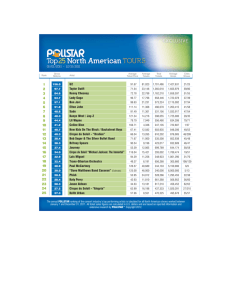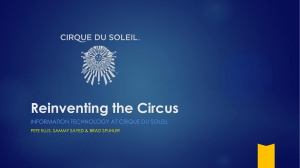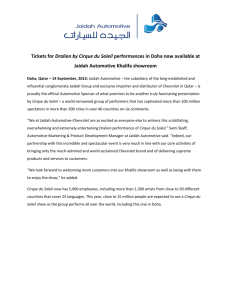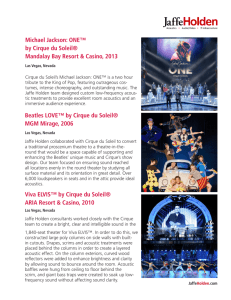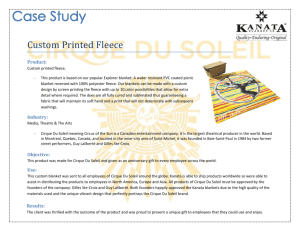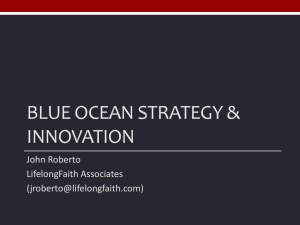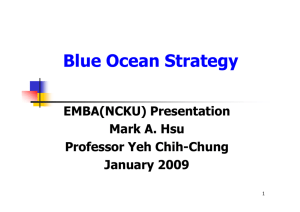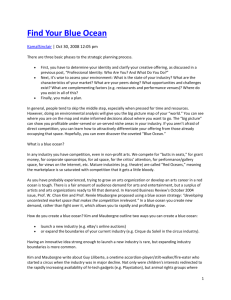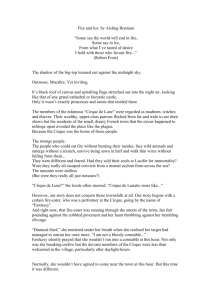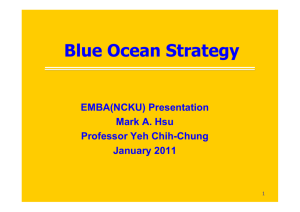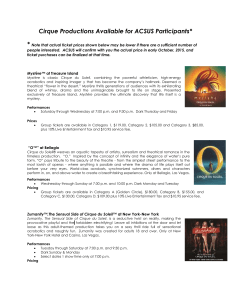questions
advertisement
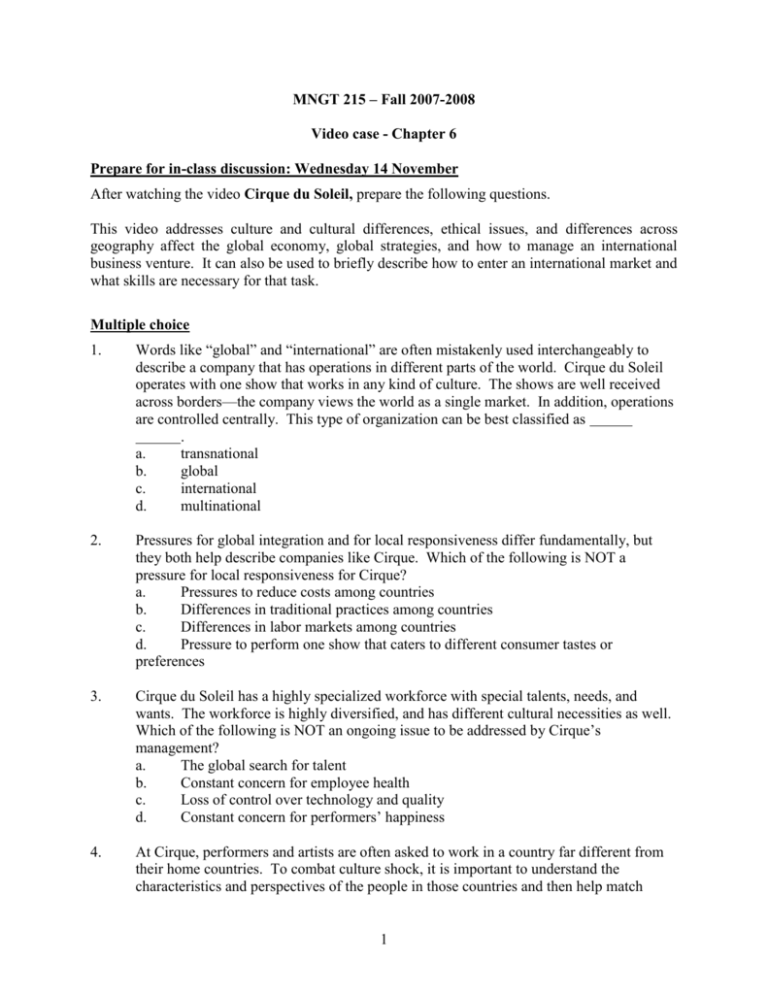
MNGT 215 – Fall 2007-2008 Video case - Chapter 6 Prepare for in-class discussion: Wednesday 14 November After watching the video Cirque du Soleil, prepare the following questions. This video addresses culture and cultural differences, ethical issues, and differences across geography affect the global economy, global strategies, and how to manage an international business venture. It can also be used to briefly describe how to enter an international market and what skills are necessary for that task. Multiple choice 1. Words like “global” and “international” are often mistakenly used interchangeably to describe a company that has operations in different parts of the world. Cirque du Soleil operates with one show that works in any kind of culture. The shows are well received across borders—the company views the world as a single market. In addition, operations are controlled centrally. This type of organization can be best classified as . a. transnational b. global c. international d. multinational 2. Pressures for global integration and for local responsiveness differ fundamentally, but they both help describe companies like Cirque. Which of the following is NOT a pressure for local responsiveness for Cirque? a. Pressures to reduce costs among countries b. Differences in traditional practices among countries c. Differences in labor markets among countries d. Pressure to perform one show that caters to different consumer tastes or preferences 3. Cirque du Soleil has a highly specialized workforce with special talents, needs, and wants. The workforce is highly diversified, and has different cultural necessities as well. Which of the following is NOT an ongoing issue to be addressed by Cirque’s management? a. The global search for talent b. Constant concern for employee health c. Loss of control over technology and quality d. Constant concern for performers’ happiness 4. At Cirque, performers and artists are often asked to work in a country far different from their home countries. To combat culture shock, it is important to understand the characteristics and perspectives of the people in those countries and then help match 1 performer to country, for example, where there is the best compatibility. Which of the following is NOT an important dimension of cultural differences that managers should consider? a. Failure rate b. Power distance c. Individualism/Collectivism d. Masculinity/Femininity 5. Ethics is an important part of how Cirque runs its operations, especially when it concerns its people. Which of the following four steps was explicitly addressed in establishing and reinforcing Cirque’s ethical codes? a. Let business partners know the standards of business b. Train employees to apply particular values c. Clearly articulate the company’s values d. Translate ethics into performance appraisal Discussion questions 1. Especially in the beginning, Cirque’s management had to determine the best way to operate in an unfamiliar territory. If the show had not been successful in Los Angeles, the performers would not have had “enough gas to get home to Canada.” While the beginning may have been a bit of a gamble for Laliberte and his circus troupe, the company quickly developed a solid global strategy to accommodate its incredible potential for global expansion. Describe this global strategy and the approach Cirque took in its development. 2. The global organization model says that the organizations it typifies often base their global competitive strategy on low cost. Do you think this is the case for Cirque du Soleil? Why or why not? Explain. 3. Because operating in a global environment means dealing with many different cultures— not just people of a different race, background, or set of values, but people of completely different cultures—can mean challenges to any business, it is important for managers in such an environment to be cognizant of these issues and to address them directly. Ethics is one facet of cultural differences that should not be overlooked. What specific ethical concerns does Cirque address in the way it seeks talent for its shows? Other Relevant Chapters: This video also relates well with the content material found within text Chapter 2: The External Environment and Organizational Culture; Chapter 7: Entrepreneurship; and Chapter 11: Managing the Diverse Workforce. 2
